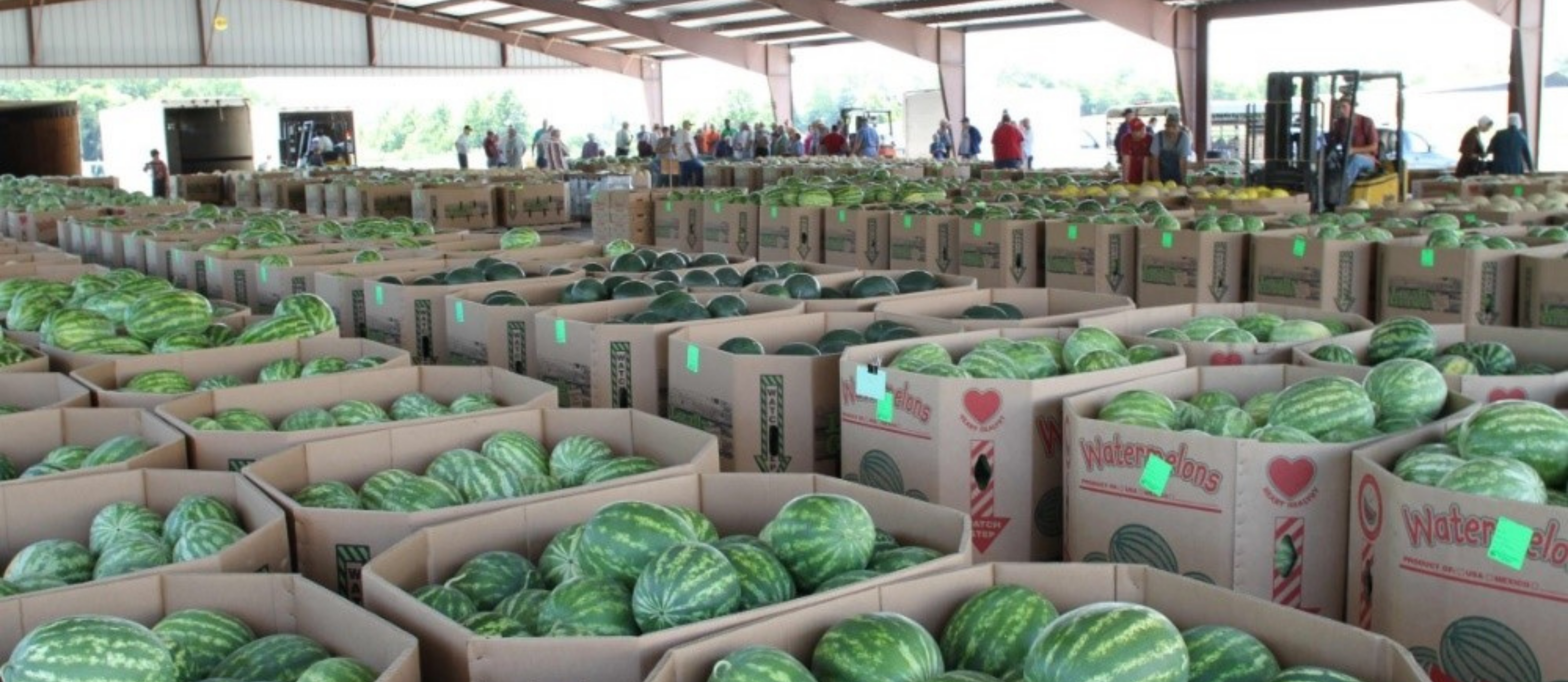Cantaloupe, Watermelon, and Pumpkin Market Trends for Kentucky
Cantaloupe, Watermelon, and Pumpkin Market Trends for Kentucky

Cantaloupe, watermelons and pumpkins have been important crops for Kentucky, especially moving through the auctions. These commodities clicked on all cylinders during 2020 in the context of the pandemic. Some of the opportunities related to strong short-term prices associated with the strong demand for local products. Good growing conditions led to both strong yields and quality and, with the strong prices, these three products helped see auction sales move roughly 40% higher for the season compared to 2019.
Cantaloupe
- The 2020 cantaloupe season started a few weeks later and ended a few weeks earlier than usual.
- The 2020 season followed the same high and low price pattern as seen in the 6-year average, but was accompanied by higher price points.
- Traditionally, the cantaloupe season has three price waves: early melons (late June), a premium after peak season (August), and late melons (September). In 2020, we saw these high price points in mid-July instead of late June, early August, and early September. The change in usual pattern can be attributed to the delay at the beginning of the season.
Watermelon
- The 2020 season overall had higher price points than the 6-year average.
- The breaks in the 2020 Average is attributed to the Fairview Auction watermelon sales not beginning until Week 27; while the Lincoln County Auction had gaps between sales in Weeks 21-22 and Week 25, followed by steady sales from Week 26 on.
- The 2020 Average and 6 Year Average follow the same trend of higher dollar ($) sales per melon in the beginning of the season (May-June), followed by declining prices per melon as the season goes on – starting in July, going through August to the end of the season. There are a few price jumps at the end of the season (September-October) which could be an opportunity for growers with late melons.
- The declining price per melon observed in both averages begins as the supply of melons comes into the market.
Pumpkins
- Over the past 6 years (2014-2019), pumpkin prices have been stable.
- In 2020, we did observe a couple of price jumps. This was attributed to some “Prizewinner” and higher-priced specialty pumpkins coming into the market. However, we did still see above-average prices for pumpkins in 2020.
- This data does capture both large (Jack O’ Lantern) and small (Pie Pumpkins) prices, but does not differentiate by them. Strong on-farm agritourism and home Halloween decorator sales helped contribute to a very strong Fall pumpkin market during Covid.
The long term trends for crops like cantaloupe are moderated by concerns over food safety, high labor costs for production and post-harvest, and growing sourcing from Mexico and Central America as now over 43% of cantaloupes are imported. Further, production (and per capita consumption) have steadily edged downward over the past 20 years as most U.S. regions have cut back acres substantially. It’s hard to predict a converging point looking forward, but there does seem to be some reliance in the market for good quality, local melons.
Watermelon markets have also been substantially impacted by imports (34% of production), with domestic production holding essentially flat for the last 30 years. Most of the growth in the U.S. market has been from imports. Again, local demand has been more resilient, especially with seedless varieties.
Pumpkins fit very well with local agritourism and a renewed interest in home decorating during Halloween and should do very well again in 2021. All three crops work well in direct markets and benefit from local wholesale aggregation innovations like the produce auctions. Labor, quality assurance programs, and trends in import production areas – especially for melons – will be critical to watch over the coming seasons.
Author(s) Contact Information:
